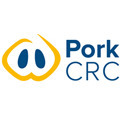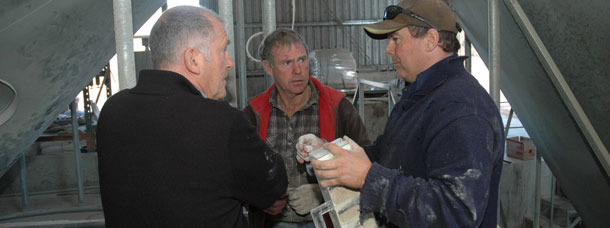 Last season Dawson Bradford grew 500 hectares of Berkshire triticale at ‘Hillcroft Farms’ at Popanyinning in Western Australia’s Great Southern, where he mills all the feed for his 700 sow piggery.
Last season Dawson Bradford grew 500 hectares of Berkshire triticale at ‘Hillcroft Farms’ at Popanyinning in Western Australia’s Great Southern, where he mills all the feed for his 700 sow piggery.
An exclusive supplier of pigs to leading WA smallgoods manufacturer D’Orsogna Ltd., Mr Bradford must maximise his feed conversion ratio, hence being able to utilise Berkshire’s high digestible energy content of up to 13.9 MJ DE/kg (about 0.5 MJ DE/kg more than the average energy in other triticale varieties) is a big production plus.

To manage problems with frost, inherent in all triticale varieties, he planted Berkshire on high ground and to extend the flowering window beyond the September frost risk period grazed it from late June to early July.
Having trialled it now for four years, Mr Bradford has found he can sow late and graze without any yield penalty. After harvest straw is used for pig bedding or sold for export.
“I’ve achieved yields above three tonnes per hectare and while it hasn’t out performed barley here, it has done better than wheat,” Mr Bradford said.
He particularly values Berkshire’s agronomic traits and its flexible sowing date.

Dawson Bradford (right) at his on-farm feed mill discussing the benefits of Berkshire triticale with mill and piggery worker Geoff Stone and Pork CRC Program 4 Leader, animal nutritionist Dr Rob Wilson (left).
Berkshire triticale was bred through the Pork CRC to be a high yielding grain with a higher digestible energy content than contemporary varieties. It yields well, especially on an energy basis and supports excellent growth performance in pigs.With financial backing from the pork industry, via the Pork CRC, the variety is now commercially available for planting in 2013.
Murdoch University Professor John Pluske, who leads a Pork CRC project to increase awareness of Berkshire triticale throughout the supply chain, said that because triticale was not widely grown in WA, it may not be an obvious crop for grain growers to consider in their rotations.
“Hence, we’ve been talking with grain growers, agronomists, grain buyers, feed manufacturers and pork producers about Berkshire because we believe it has benefits for the pig industry and also for the grain industry,” Professor Pluske said.
Long-term NVT trials in eastern Australia indicate Berkshire is a leading triticale variety.
While there wasn’t NVT data for Berkshire in WA, independent trails in the 2009/10 and 2010/11 seasons, showed average yields across several sites compared well to established wheat varieties, indicating Berkshire could be important as a break crop.
“Berkshire’s ability to handle acidic and waterlogged soils gives grain growers an alternative option for these soils, but also because it has performed well across soil types it could be considered as a replacement for wheat in some years,” Professor Pluske said.

December 12, 2012 - Pork CRC


